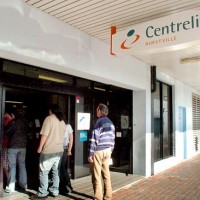
There was some good material produced yesterday by several bank economists on the Labour Force survey which showed that the headline numbers are hiding a trend towards higher unemployment that is likely to become apparent in the next six months. First, to give you some perspective on what has transpired so far, Westpac made the point that:
First, but for revisions to the June observations, July would have seen a marginal deterioration in the unemployment rate, from 5.20% to 5.23%.
Further, July saw the continuation of a now year-long trend: employment growth being driven by part-time job creation, not full-time. Over the past year, full-time jobs have increased 20.8k versus a 45.2k increase in part-time jobs.
Consistent with the full/part-time story, we note that in July female employment growth remained dominant: male employment fell by 6.2k while female employment rose 20.2k. Over the past year, female employment growth has been almost three times stronger.
In terms of the state breakdown, there is little to report. NSW (3.3k), QLD (6.2k) and SA (2.1k) all saw small increases in employment in July. In contrast, modest job losses were seen in VIC (–3.8k) and WA (–4.2k).
Movements in the participation rate and the unemployment rate were very marginal in July, but taking a longer-term view, changes in the participation rate have been crucial in keeping the unemployment rate between 5.0% and 5.3%.
Had the participation rate not declined from its Nov ’10 peak of 65.97% (to 65.23%), the unemployment rate would be above 6%. This is consistent with the decline seen in the employment to population ratio during this time, from 62.58% to 61.84%.
Add to this a series of excellent charts from ANZ. First the trend for unemployment has turned higher:
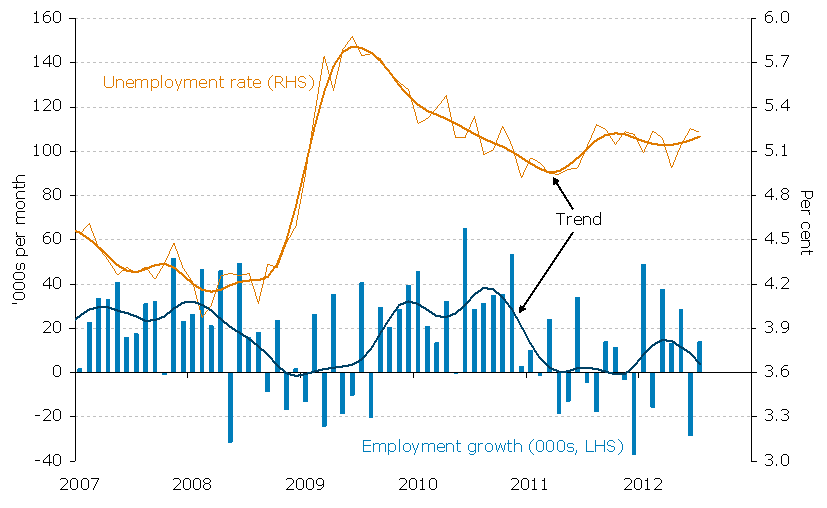
And ANZ pointed to some SEEK data as well:
SEEK also published its internet job ads data for July today. The number of new job ads declined 5.1% m/m in July and by 11.2% y/y. The monthly decline in the SEEK series was steeper than the 0.7% m/m (and -8.6% y/y) decline in the internet component of the ANZ job ads series in July.
According to SEEK, all states have recorded falls in job ads in recent months. Job ads in the resources states of WA, Queensland and the Northern Territory had been more resilient than in other states until late last year. Since December 2011, job ads in these states have fallen in line with the national total. It is now clear that declining commodity prices and softer growth in China have been weighing on job ads in the resources states.
The job ads data, by themselves, suggest that employment growth could be quite soft in the next few months.
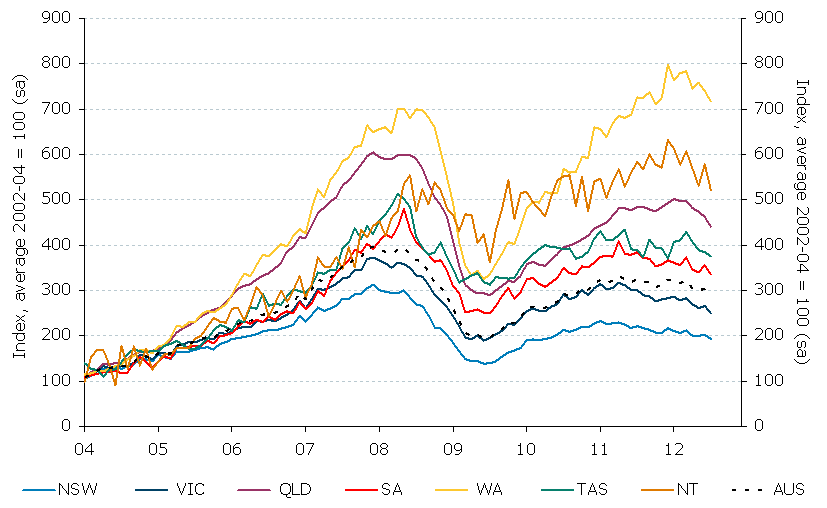
ANZ correlates this employment figures:
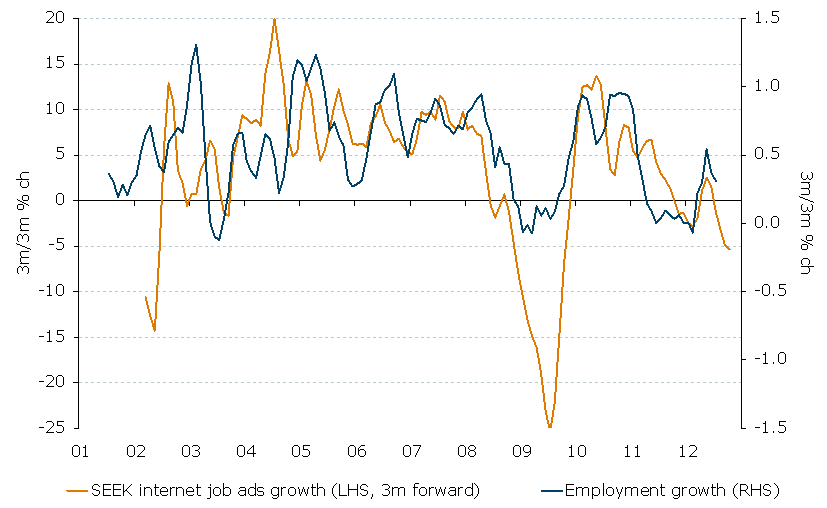
And commodity prices:
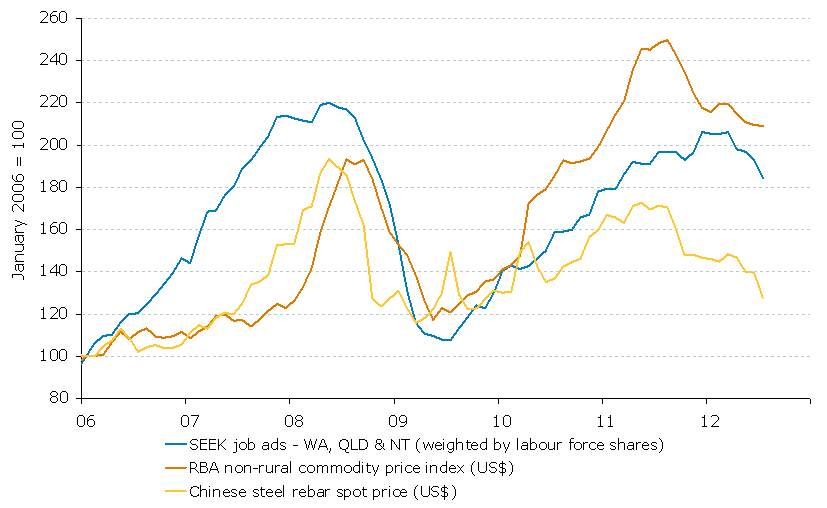
I was early expecting a material rise in the unemployment rate as housing weakened late last year (having missed the forthcoming decline in the participation rate). Looks like it’s on the way in the headline index now though. Not catastrophic but most banks now see unemployment in the 6% range at year end. And I agree. Add the declining participation rate and that is actually 7% relative to where we were in 2010/11. A quite significant adjustment.

